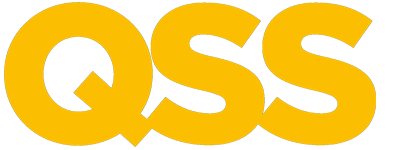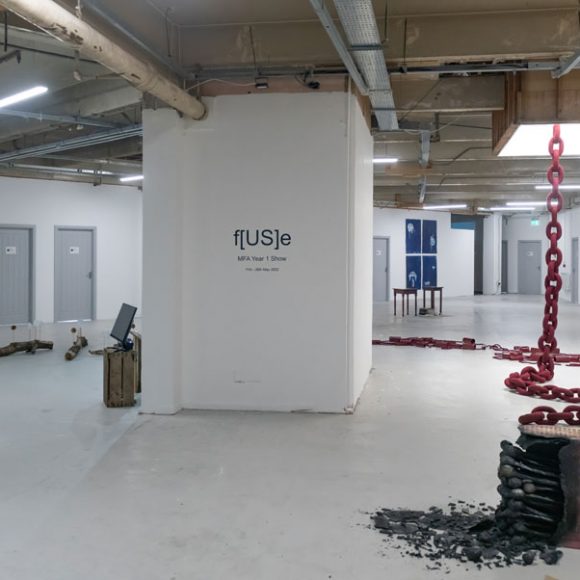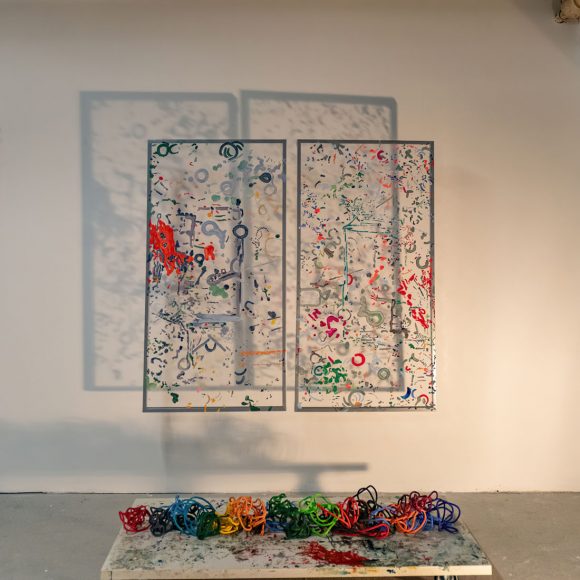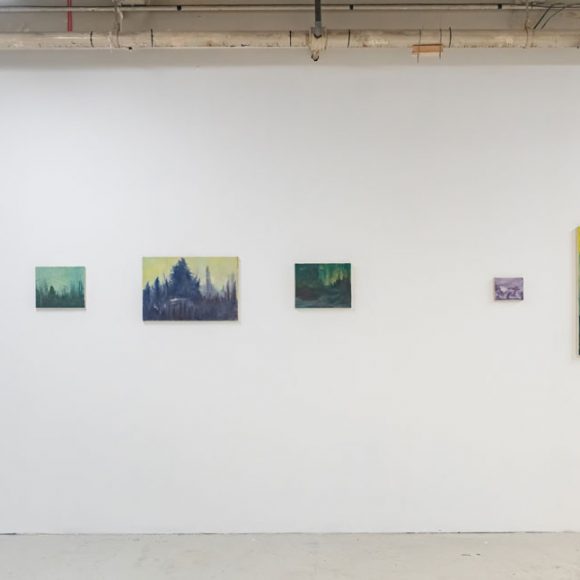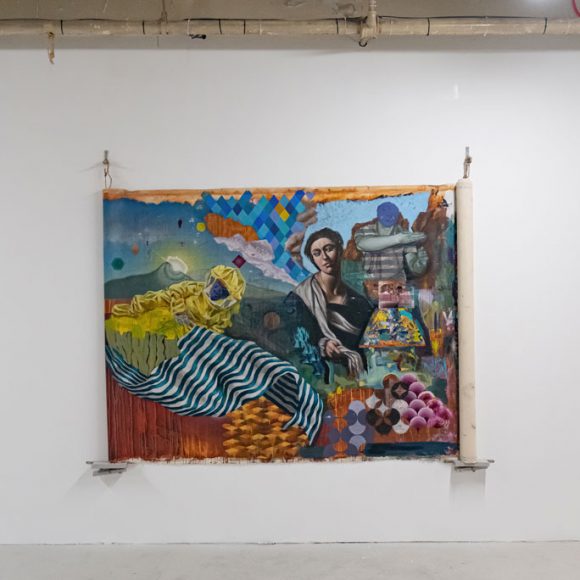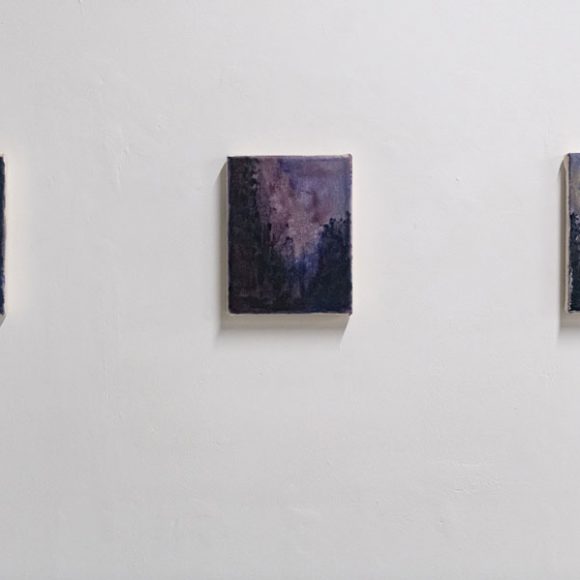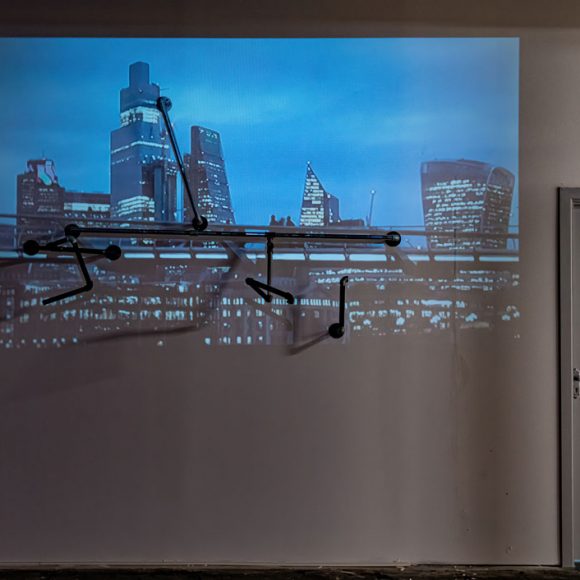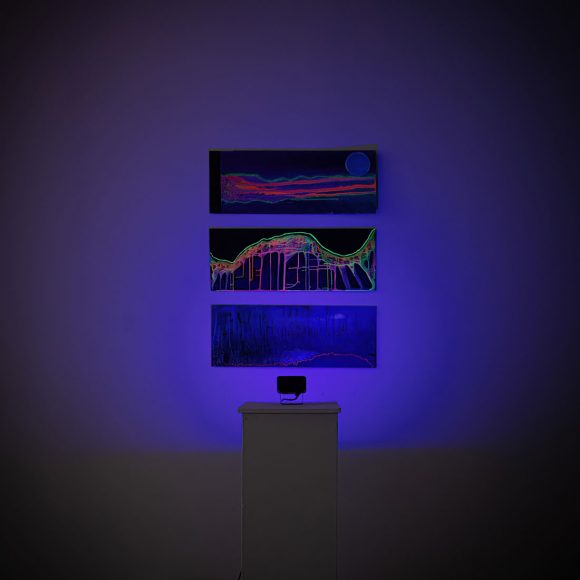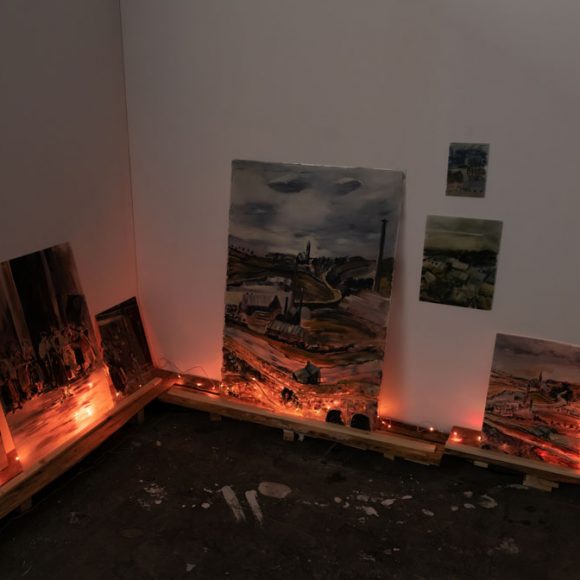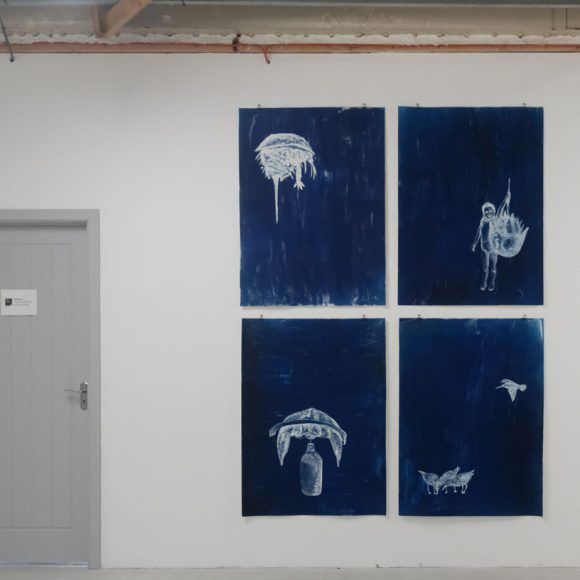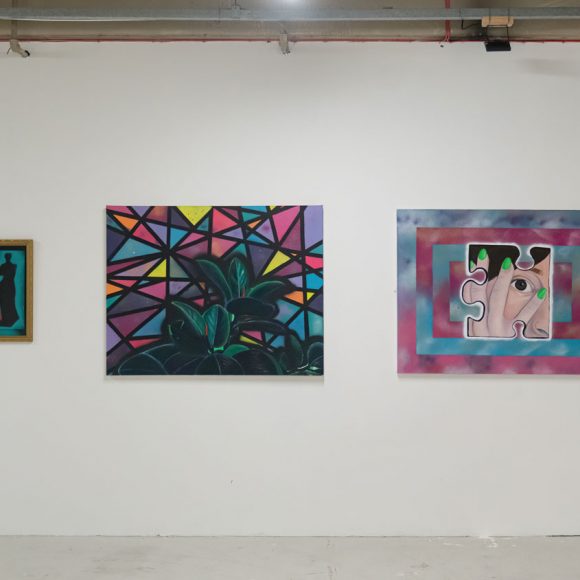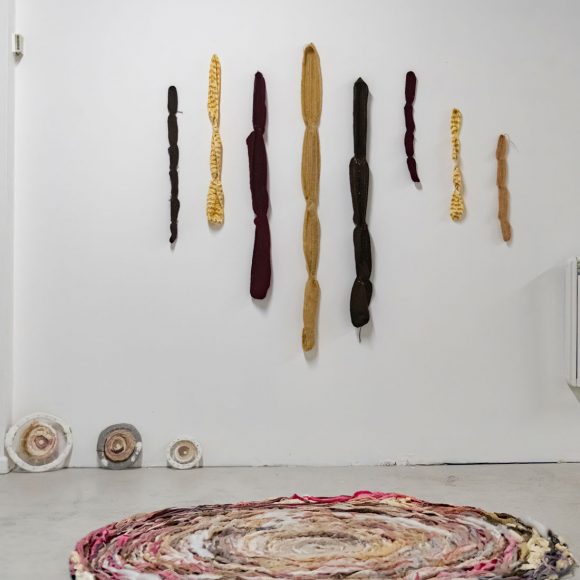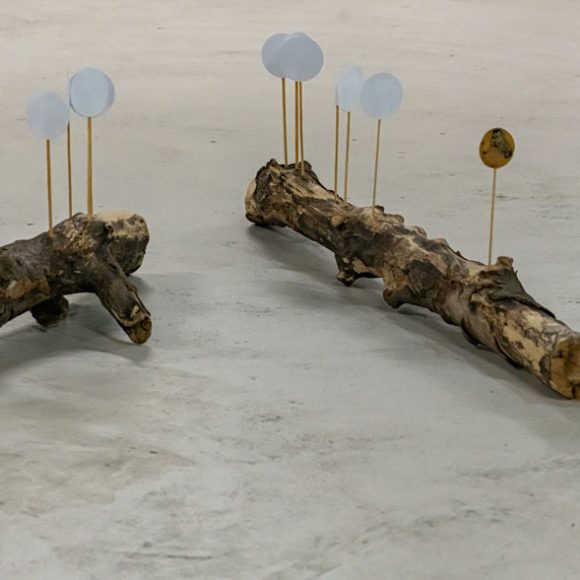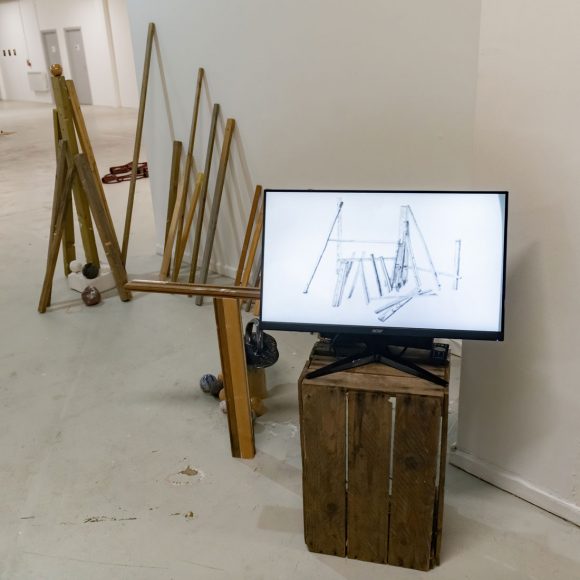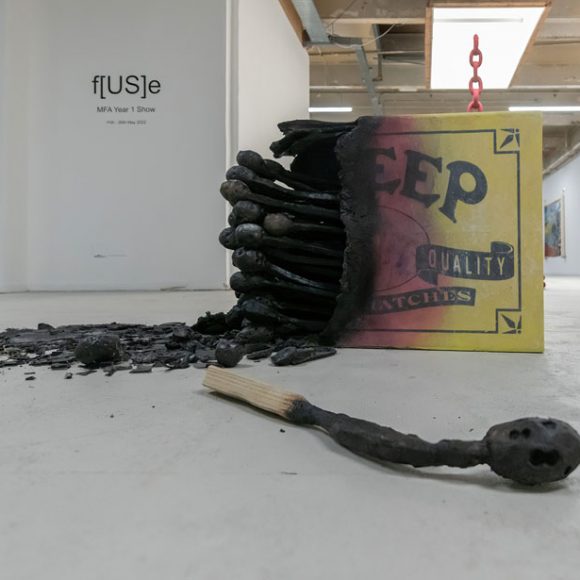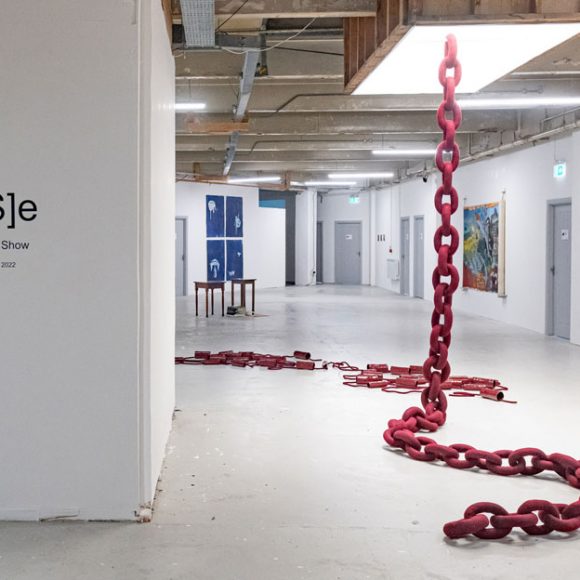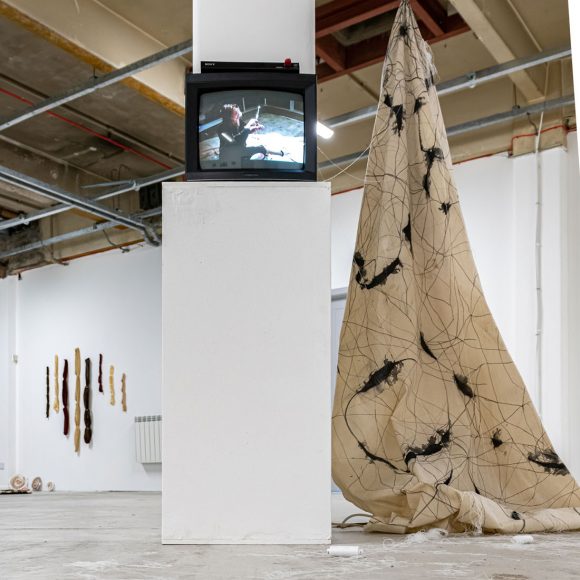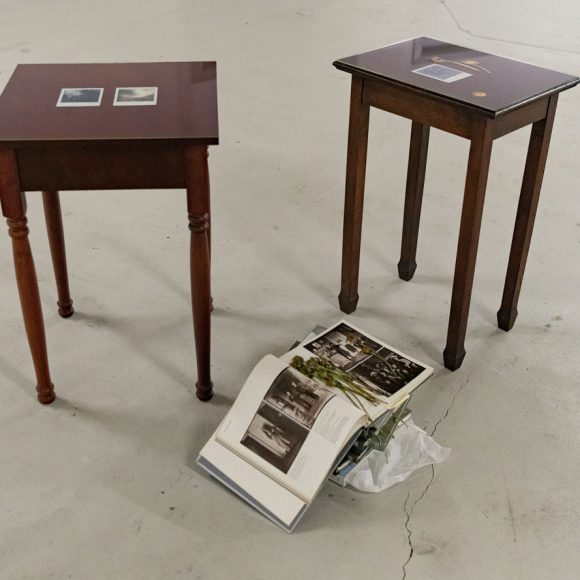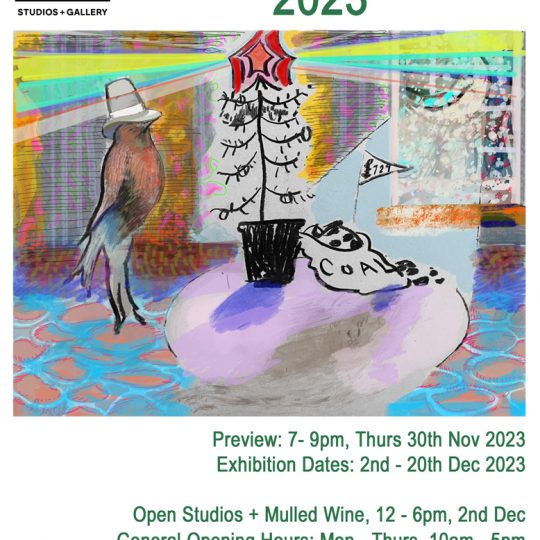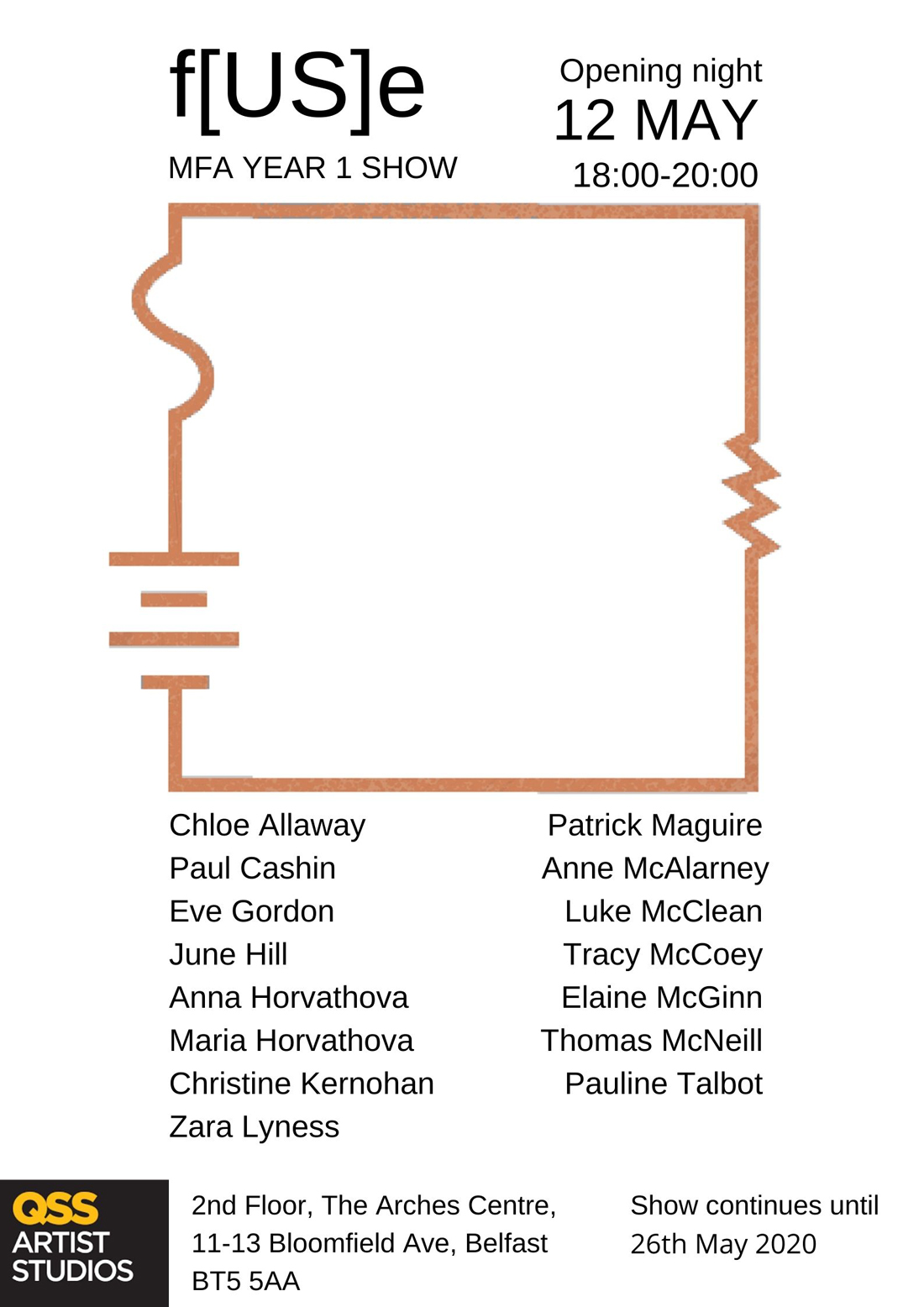
f(US)e | MFA 1st Year Show from the Belfast School of Art
QSS Gallery and Studios is delighted to once again partner with Belfast School of Art to host F(US)E, a group exhibition showcasing works from the current Year 1 MFA students.
Opening event: Thursday 12th May 2022, 6pm-8pm.
No booking required, please see the ‘visitor information’ section of our website for further details on visiting the gallery: https://www.queenstreetstudios.net/visitor-information/
Exhibition dates: 11th-26th May 2022, Tuesdays, Wednesdays and Thursdays, 10am-5pm.
f(US)e 15 components 15 artists
Switch
The function of the switch is to regulate the current between the load and the source of power.
Capacitor
The function of the capacitor is to store energy.
Battery
The function of the battery is to supply energy.
Diode
The function of the diode is to allow energy to pass in one direction.
Resistor
The function of the resistor is as a passive component, to limit the flow of current.
LED
The function of the LED is to convert energy into light.
Voltmeter
The function of the voltmeter is to measure voltage.
Ammeter
The function of an ammeter is to measure current.
Themistor
The function of the thermistor is to change its resistance as temperature changes.
LDR
The function of the LDR is to detect and react to light.
Lamp
The function of the lamp is to glow brightly when current passes through it.
Transistor
The function of the transistor is to amplify or switch signals and power.
Buzzer
The function of the buzzer is to provide an audio signal.
Motor
The function of the motor is to convert energy.
Transformer
The function of the transformer is to increase or reduce voltage.
f(US)e
Only our forms endure. And stubborn words hover and adhere, attend to our passing like faithful retainers.
Geddis, Gary. The Terracotta Army (Oberon: 1984).
Little words may have large meanings. The work in this exhibition, as with its title, has diverse connotations and multiple intentions.
Cohesively combining work is a particular challenge for a group of students who, ultimately, are appraised individually. In embracing this difficulty, we have collectively curated our work, searching for cohesion. The work flowing, as in a circuit, becomes a functioning body of research in itself, as opposed to a collection of individual mini exhibitions; all components essential to the efficacy of the whole.
The process, to learn, to develop as artists, to work together may or may not be evident or relevant for the viewer. Regardless of intention or meaning, we have united, amalgamating and rendering our work around the title f(US)e, where explanation dissolves or is at least, rendered thin. As with a functioning electrical circuit, the combination of components allows various simple and complex operations to be performed. Thus thoughts, ideas and concepts, like electrons, can be moved, from one place to another, from one individual to another through paint, sculpture, photography etc. Here words are superfluous and yet not. Here we have the cell, here the battery, here the capacitor, the resistor, the transformer…The fuse (the making of art) within this context, permits experimentation. The mechanism as a sacrificial device, allows the work in this exhibition to stay provisional and speculative.
Participating Artists: Anna Horvathova, Anne McAlarney, Chloe Allaway, Christine Kernohan, Elaine McGinn, Eve Gordon, June Hill, Luke McClean, Maria Horvathova, Patrick Maguire, Paul Cashin, Pauline Talbot, Thomas McNeill, Tracy McCoey, Zara Lyness
Artist Statements:
Anna Horvathova
Born in Slovakia in 1996, moved to Northern Ireland in 2010, Anna graduated from Belfast School of Art with a Bachelor degree of Fine Art (Honours) in 2019.
Through her recent body of work Anna uses polaroid photography to capture the presence of light within nature, using photography and image making as a method of recording her experience and capturing contemporary memories. These photographs then act as an opportunity to explore her homesickness and struggles with change. The images also aim to emphasise the concept of the merging of spiritual meaning of existence and memories.
Photography emphases her way of thinking about light and composition to communicate and perform an understanding of certain narrative. In her practice she is mostly using equipment such as a 35mm film camera, digital camera, scanner and polaroid camera to create images with atmospheric and aesthetic quality.
Anne McAlarney
Anne’s practice has developed from recent research in Co. Mayo and Co. Sligo. In collaboration with archaeologist Sam Moore and Uilleann piper Stephen Porter, Anne explored places of darkness, both historical and natural, including Carrowkeel Megalithic Complex, Caves of Kesh, Moore Hall and Nephin dark sky park. These places are monuments to place and time, to past and present.
Influenced by this research Anne began thinking about traces and cyphers within landscape. Marks made on her studio desk from the creation of previous paintings emerged as geographies of past actions. With trace and cypher being key, these marks have been traced using clear vinyl and acrylic paint. The marks began to take on a language of their own, with just a hint of their past lives. Reaching outwards from the confines of inner physical space, they give articulation to the experience of being, as cyphers, tangible markers of time, with the notion of space a unifying force.
The works have been photographed and filmed in the landscape, crossing water and boundaries. Removing them from the past and into the present. Here, poetry and painting are spatial trajectories, organising space and giving voice to the unspoken story. Here, fragments are excavated diffusely, relived, their tracings recorded and reproduced. This correlation between landscape and inscape is expressed as a correlation between concealment and revelation, absence and presence and becomes a bright nowhere from which presence emanates.
Chloe Allaway
Chloe is a Belfast based mixed media artist. Chloe completed a BA (Hons) in History, specialising in Colonial Southern Africa.
Her works have focused on concepts of loneliness, isolation, and solitude, mostly influenced by the social effects of the pandemic from 2020, but also by her personal experiences growing up as an only child and as an alternative person in Northern Ireland. Additionally, her contextual influences have expanded towards experiences of the self and cognitive dissonance within inter-personal relationships, as well as focusing on impressions of female identity, self-expression, and self-definition, particularly within the context of modern social media use and its impacts.
Her practice has primarily made use of oil and acrylic paints, as well as spray paint, with a colour palette extending to UV reactive neons. She also makes use of stencils and 35mm photography. She has worked from small to large scale on canvas and board and has also created a large scale mural by stitching together paper using embroidery thread, and which was later destroyed.
She is influenced by the works of artists such as Gerhard Richter, Cecily Brown, Frida Kahlo, Mark Bradford, Francis Bacon, John Hoyland, Christopher Hanlon and Georgia O’Keefe.
Christine Kernohan
Christine Kernohan is a multi-media Artist. With a subtle minimalistic approach to making, she works primarily on sculpture, photography, textiles, and embroidery.
She works with a hands-on method of weaving, meaning that she would construct her own weaving loom and weave the textile by hand, instead of using an industrial loom. Now also using circular looms to explore repeating forms and spirals within the body. Kernohan’s inspiration is derived from the relationship between the mother and the child. Creating such weaves that will be intended to be wall tapestries or wall hangings that could be draped around the mother like figure, suggesting a motherly protection or the protection of modesty for the child. Kernohan also bases her subject matter around Generational Trauma, trauma being passed on through the womb of each generation. In a way she sees textiles as a way of creating a safe environment for herself and others, she uses her practice to work through her own personal trauma. She sees textiles and many other art practices as Art Therapy which she is passionate about finding a way for individuals to work through their trauma and try not pass it onto the next generation.
Furthermore, to explain the concept of the work that Christine makes suggests the weave becoming a physical protection like a skin. The colours that she uses within her work are neutral and flesh tones that are used to counteract with the feminine and the female. Also, Kernohan works largely with sculpture, with this being quite textural or tactile in style. For example, from her perspective, she sees her works being entirely sculptural including the weaves and the use of embroidery involved within the process. The interest with Christine’s work is the textures that she creates through her weaves and the meaning behind them.
Additionally, Kernohan works with 35mm black and white film photography that explores the eerie atmosphere through the unpredictability of the photography process. She uses the practice of embroidery to explore stitching with pain. Christine hand dyes her fabrics using natural techniques and acrylic. When going through this process, she selects one of the many aesthetic tones that are familiar and reoccurring throughout her work to colour the fabric.
Elaine McGinn
Coming from a background of fine art, art therapy and performance art. Elaine McGinn combines elements of drawing, performance, and video. Responding from an embodied art practice, she engages with the connections between conscious transition and societal change. McGinn aims to expand awareness of the crucial and complex role of the body in the making and experiencing of art, cultivating an immanent relationship with time and agency. A reflection on the expansive nature of human sentience.
Eve Gordon
Eve Gordon is a transgender visual artist based in Bangor, studing as part of the MFA at Belfast School of Art. Her current practice uses textiles and ceramics for sculpture/installation and illustrations on paper. Her work is a process-based practice with the development of her work being informed by, and in turn informing, their relationship with traumatic life events.
Recent works have been made in response to the death of the artists Mother and the disease which killed her; Amyloidosis. Amyloid itself is a collection of misfolded proteins which clump together.Making the same forms and illustrations over and over again not only provided a tangible and comprehensible reflection of her passing, but it also provided a form of comfort. Repetition is a key theme within the work, both in terms of repetitive processes, repeated objects or repetitive imagery. This repetition is an essential part of working as it provides structure, a counter action to the great unknowns of experiencing trauma. This has taken the form of multiple ceramic tubes which replicate models of amyloid protein structures found in Biology textbooks and a soft sculpture chain which reflects the amino acid chain which forms a single light chain.
Through these burgundy forms she makes an intangible microscopic disease and the process of grief itself into something that is tangible, material and can be reckoned with.
June Hill
June Hill is a multidisciplinary visual artist from Belfast Northern Ireland, who works mostly with installations that combine video and photographs over the top of sculptural props. In this work an installation has been set up using found objects of large metal pipes and a discarded piece of Perspex, the employment of industrial props to highlight the invisibility of the mundane, these become screens to host video clips, of every day lived experiences such as walking, or commuting on public transport, Concepts behind this work are of time passing, past present and future, and of entering into the moment. A video clip of life backwards is a disturbing reminder that time is not an unlimited quantity.
Luke McClean
Luke McClean is a multi-disciplinary artist based in Belfast, N.I.
His practice researches our momentary relationships with specific locations, a fragile space where gut feelings and thoughts on the tip of your tongue belie the balance between the undisturbed site and the change of presence within it. His work typically involves multiple responses to a chosen location, reflecting on compromise and permanence as translational notes to the in-person itch of curiosity.
Maria Horvathova
Born in Slovakia in 1996, Maria moved to Northern Ireland in 2010 and completed a bachelor’s degree of Fine Art (Honours) in 2019 at Belfast School of Art and went to obtain a master’s in fine arts at the same University.
Northern Ireland based visual artist, Maria Horvathova has been developing her practice in drawing and painting discipline for the past several years during her degree. After a life changing move from Slovakia to Northern Ireland, Maria found a strong connection to home in nature.
In her current practice she explores the wonders of landscape, in an observational, romanticised and mystical approach. She is interested in creating landscapes that tell stories (narratives) and remind the viewer of old feelings and memories. In her childhood she would escape into nature, as it gave her a feeling of freedom. Her connection and perception of the landscape has developed into an appreciation of the natural world around us.
Experimental approaches towards painting methods and the use of varying surfaces have found discoveries from through thin layers of paint. Maria uses painting as if drawing approach as it allows the landscape to appear.
The way she visualises landscape is expressed in a painterly idiom of unusual bond and fluency, based on gatherings of my favourite motifs such as the clouds and the trees, the sun and the moon, the mountains and the horizon. These constitute a system of visible language development around the way that she chose to perceive the environment.
By approaching a microcosm and macrocosm concept of scale in her practice, she creates a connection between the landscape and the viewer in hope to emphasize the importance of nature and its fragility, and how unique our blue planet is in the observed universe.
Paul Cashin
Paul is an Irish artist based in Belfast currently studying for his MFA in Ulster University. His chosen medium is paint on canvas, although he allows a variety of crossover mediums such as photography and drawing, along with some sculptural elements. Paul is interested in large scale paintings that employ a sense of embodiment to create, large complex scenes imbued with pattern and repetition. The act of repeating a pattern or mark performing as a mediative act, like individual steps that carry one up a mountain.
Paul has taken a 1.6m tall and 10m wide roll of canvas and mounted it to the wall in such a way to allow him movement in either direction, left or right. This allows him to encapsulate an epoch of his life, the duration of the MFA for instance, into one long painting, one scene, reflecting his thoughts, views, curiosities and his overall lived experience. The scroll allows him to paint in a linear or non-linear pattern. He is confined within the borders of the material itself, much like we are confined by our three dimensional experience. However, he has freedom within these confines to do as he wishes, he can plot scale and content in whatever manner he sees fit. He can decide where the images sit, on the surface, within the surface, behind the surface. Various techniques, illusions and methods of thinking grant him access to these multiple perspectives.
Paul likes to think of his scroll painting as a mountain range, a vista that the viewer must actively engage with, moving side to side. To understand space, Paul considers movement in time and such, his paintings have multiple viewpoints. The scale insists on the viewer actively moving around to view the painting from multiple viewpoints, participating in the experience of time. Our attention is carried along laterally from right to left, being restricted at any one moment to a short passage, which can be conveniently perused. This movement must be experienced in time, like literature, because we must see it step by step if we are to apprehend all it subtleties. The scroll is something the viewer actively engages with, zooming in on individual parts of time and space. The viewer is aware that there may be a larger image but is denied access to the complete image. In order to see all one must return again and again as the scroll progresses. Time here signifying the changing perspectives.
Pauline Talbot
Pauline is a visual artist based in Coalisland, Co Tyrone where she teaches community painting classes. Pauline uses her painting to provoke dialogue around the outer and inner landscapes of human experience. Deconstruction and use of unconventional grounds dominate her approach as she works with found materials and things that arrive to her. Using repurposed, non-traditional grounds to explore connections between history, identity and place. Breathing new life into used items has become central to her creative endeavour’s and speaks both to her own background of working therapeutically with people and to issues of sustainability. Her explorations have led her to examine how people have shaped and scarred the landscape around them.
In her latest work Pauline has repurposed non -traditional grounds as part of her exploration of legacies-connections between history, identity and place.
‘I am currently looking at the industrial rural town where I grew up, the impact of numerous extraction industries on its landscape and people and my own conflicted feelings about the place. I also feel there is something to be revealed by drawing parallels between the impact of the industrial revolution and ‘the troubles’ on this small rural town and its people
For The QSS show FUSE, Pauline has produced Fragile Things-a collection of limited palette, melancholic acrylic paintings which embrace the beauty in the bleakness of the landscape, human suffering and hardship. Reclaimed, reborn, reimagined- how a strong, resilient community can emerge, endure and bloom alongside nature as it heals the scarred broken landscape and how the legacy of industry and the passing of time has formed the landscape and the people.
Thomas McNeill
Thomas McNeill works from his family farm, located near the north coast of Northern Ireland. Since completing a BA degree in 2020, he has been developing skills through sculpture, installation and video. Appreciating the intricacies of today’s social structures and their interdependences, combined with the practical and business facets of agriculture, McNeill has developed the theoretical understanding of socio-political themes which permeate his work.
His methods include appropriating found objects and materials, some of which have direct connections to events while others are imbued with symbolic or metaphorical significance. Others are modified in some way to enhance a message by exploiting their tactile properties
His untethered, de-contextualised imagery provides new versions of the unexceptional with interplay between the macroscopic and the microscopic. Offering an intimate and immediate sensory discord, this stimulates an otherworldliness, devoid of spatial constraints in a hyper-real simulacra.
Reality can be a disappointing meme; life’s expectations can become transient and fleeting. A joyfully unexpected pleasure contrasts with the pain of loss, often leading to despair and anguish. These events often seem pointless and destructive to the individual psyche and materialise as personal abnegation and refusal to engage with life. It is easy to surrender to circumstances which seem beyond our control so we may look for distractions to relieve us from approaching reality. Despite the background of pointless amusement, McNeill’s work focuses on wasted potential and wilful, vague diversion. The burnt matchbox symbolises the physical attempt to hide from reality, to add credence to an alternative deliberation and to draw attention to a singular course of action. The first match strikes and flares into flame, something much more immediate, more exciting, spontaneous and uncontrolled is about to happen. As the flame nears the match heads in the box, the promised fulfilment seems assured as, for a second the flaming box and its contents become the centre of attention. But little is achieved and idle curiosity is replaced by the acrid residue of spent phosphorous sulphide and ash. Such diversions offer a release from purposeful engagement and act as an expression for inconsequential waste.
Zara Lyness
Zara Lyness has a sculptural and performance background, the materials she uses vary and include inherited things, things of the body and home. Themes in her work are grounded in memory, relationships, boundaries and permissions, and perceived values has influenced the interdisciplinary development of her practice. Usually combining elements of performance and sculpture, her recent practice has expanded to include drawing and video.
The work for this exhibition combines hoarded materials and made objects, drawn together from focusing on the perceived value of materials, relationships and memories. Memory is vulnerable, the assemblage of recollections can change meaning over time. The building, collapses and recombination of materials links the past and present, unlocking memories, mapping events and reimagining interactions. The live performative aspect of her practice remains mostly unseen and the recorded moments over time leave gaps for memory to fill. The ritualistic repetition of drawn documentation developed towards thoughts about symptoms of visual impairment and the impact this has on the making and viewing of artwork. With this work, the fragility of the connections creates a tension in the structure and glimpses of the potential for damage if the balance is not maintained. Failure, whether of sight or construction, become part of a process and not end point.

